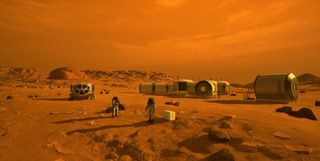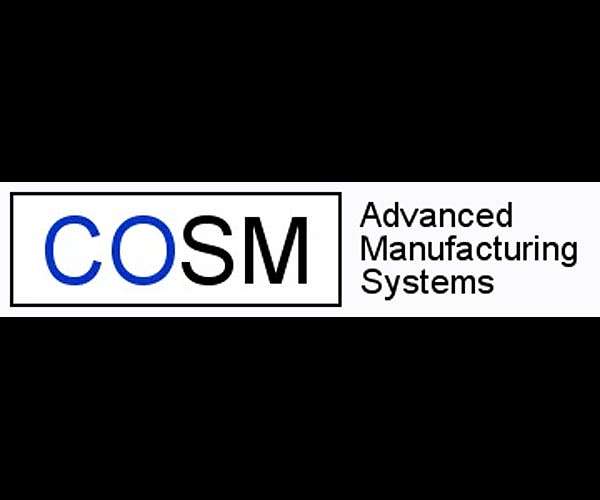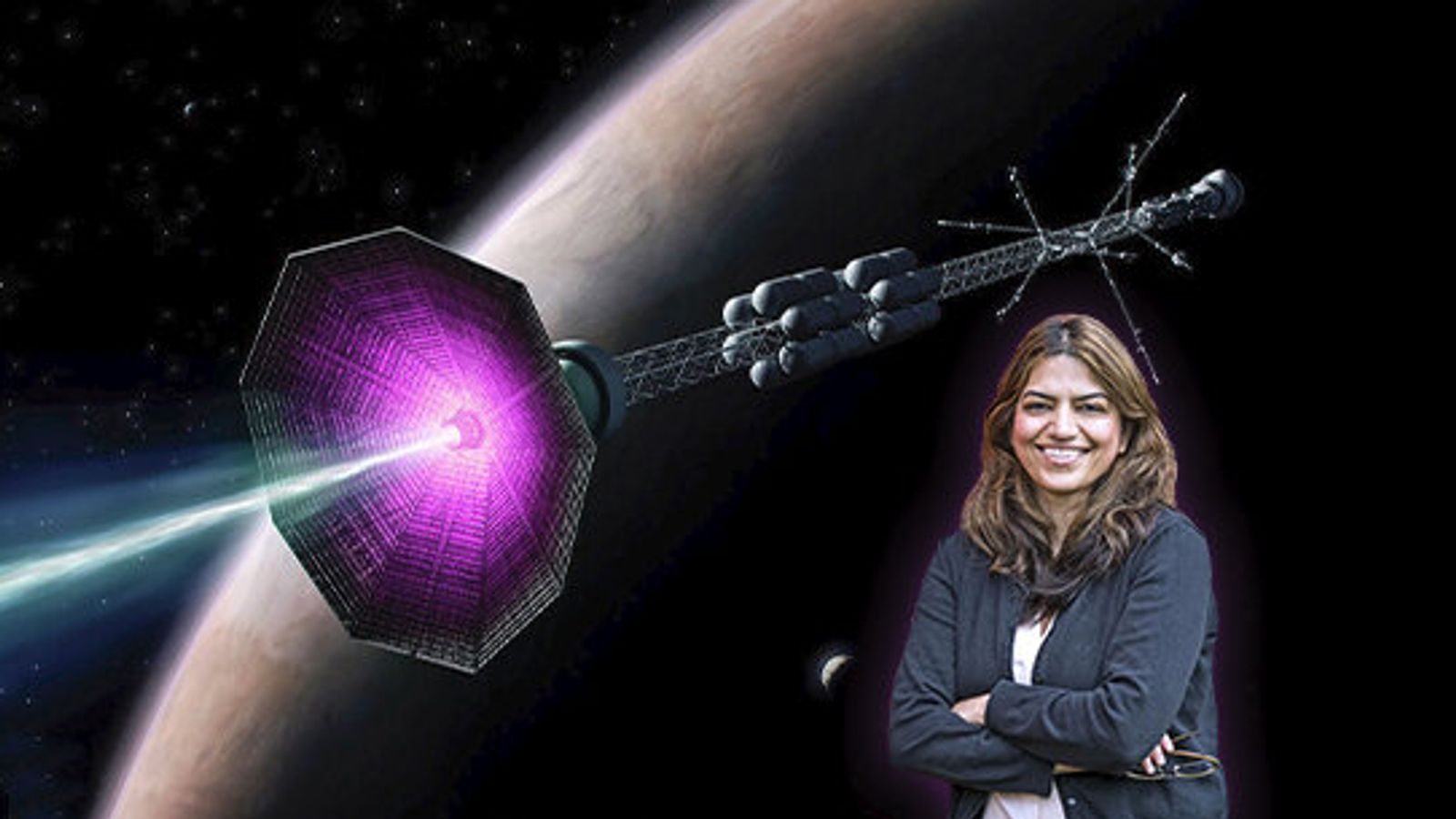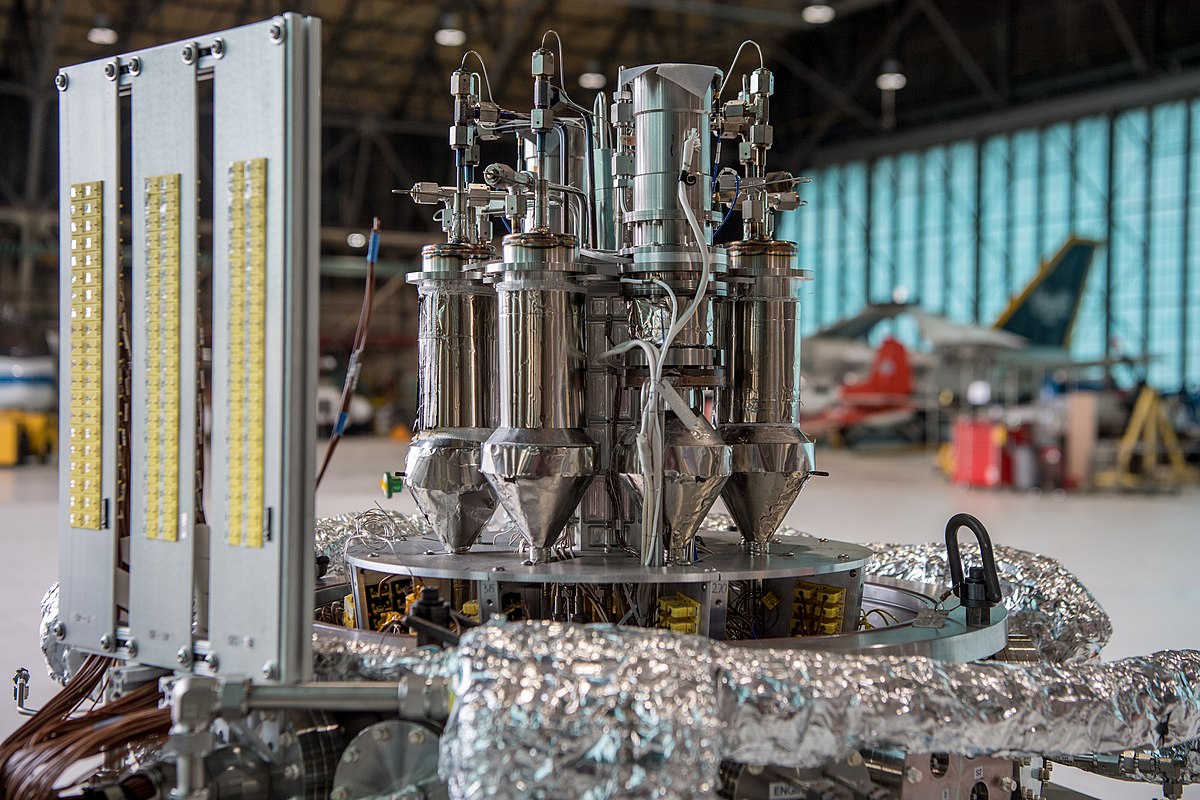Well this looks like an appropriate thread to start posting NASA history...
Space Shuttle Columbia made its first voyage into space 40 years ago today on April 12, 1981, starting the shuttle program’s 30-year run as NASA’s workhorse of human space flight. At 7 …

www.orlandosentinel.com
Space Shuttle Columbia launches into space for the first time on April 12, 1981. With astronauts John Young and Robert Crippen aboard, Columbia began the 30-year run of NASA's space shuttle program. (RED HUBER / ORLANDO SENTINEL)
Space Shuttle Columbia made its first voyage into space 40 years ago today on April 12, 1981, starting the shuttle program’s 30-year run as NASA’s workhorse of human space flight.
At 7 a.m. – right on schedule – Columbia roared off launch pad 39A at Kennedy Space Center with veteran astronaut John Young of Orlando and space rookie Robert Crippen aboard.
It was the second attempt at Columbia’s first flight after a computer error scrubbed the initial planned launch two days earlier. The delay produced an unplanned but notable cosmic happenstance: the world’s first reusable space plane launched 20 years to the day that Russian Yuri Gagarin became the first human to fly into space.
Columbia’s debut mission would be the first of 135 for the shuttle program, which would end on July 21, 2011, when shuttle Atlantis landed at Kennedy Space Center.
In between the two milestone flights, the five space shuttles would deliver some of America’s greatest space triumphs and tragedies.
Celebrated were shuttle missions that brought the first American women and persons of color to space, that placed the Hubble Space Telescope into orbit and that delivered most of the modules for the International Space Station.
Mourned were the losses of the seven-person crews of shuttle Challenger, which exploded during launch on Jan. 28, 1986, and of Columbia itself, which was destroyed during its return to Earth at the end of its 28th mission on Feb. 1, 2003.
To commemorate Columbia’s first launch, here is a reprint of part of our Orlando Sentinel coverage from 40 years ago, reported by staff writer Peter Larson on the front page of our April 13, 1981 issue:
‘One fantastic ride’
Unfettered at last from its launch pad, the overdue shuttle finally roared into orbit Sunday morning in a flight so smooth it left launch crews astonished.
Hailed by 600,000 spectators and monitored by a Russian trawler, Columbia bolted skyward on schedule at 7 a.m., rolled upside down, and reached orbit nine minutes later. After 2-1/2 years of waiting, the interminable countdown was over.
America’s stumbling space program, after a six-year intermission, seemed as sure-footed as ever.
“It was worth the wait,” shuttle commander John Young said during his first hours of flight. “The vehicle is performing just like a champ. It was as smooth as it possibly could go . . . better than anyone expected on the first flight.”
Young, 50, who set a human record with his fifth blastoff into space, had a heartbeat of 75 to 80 beats a minute during liftoff. Crippen’s heartbeat pulsed at 130 beats per minute during the 43-year-old astronaut’s first minutes in space.
“That was one fantastic ride; I highly recommend it,” Crippen said as he entered space for the first time. “Oh, man, that is so pretty.”
“It sure hasn’t changed any,” Young said. “It’s something else out there.”
George Page, NASA director of shuttle operations, called it a “picture book” launch, and agreed that it went much better than launch crews expected.
In the launch firing room, 150 engineers waved American flags and cheered. But no sooner was the shuttle up than Mission Control discovered the potential problem with the [thermal protection] tiles, which they noticed missing 90 minutes after launch as Crippen and Young opened the Columbia’s cargo bay doors for the first time.
Scanning the far end of the 60-foot bay, television cameras aboard the spacecraft revealed 13 to 15 tile cavities atop the maneuvering engine pods that power the shuttle in space.
At Mission Control, experts theorized that a sonic shock wave shook the tiles loose shortly after launch. The tiles protect the shuttle from Intense heat when it re-enters Earth’s atmosphere.
Downplaying the damage, NASA officials said none of the tiles was in a critical area and would not prevent the Columbia from landing safely.
“There Is no reason to believe we have more serious problems anywhere else,” said flight director Neil Hutchinson. “People are not scurrying around thinking doomsday things.”
Hutchinson said a contingency team would study Air Force photographs of the orbiter shot from Malabar, south of Melbourne, and the Hawaiian island of Maui.
The team also will investigate detailed films of the engine pods taken during the launch, information supplied by contractors, and data from instruments that record heat on the shuttle’s surfaces during launch.
Of all the trials and tribulations to beset the $10 billion shuttle, the tiles have been the greatest headache.
Shortly after the shuttle arrived at the space center two years ago, it became apparent that most of the thermal protection work had to be pulled off, strengthened, and glued back on again.
Fabricated by Lockheed Corp. and installed by Rockwell, 30,922 protective tiles coat the shell of the orbiter like a heat-resistant skin.
Other problems encountered during the first day in apace were minor. A data-gathering device that monitors the spacecraft’s performance began running continuously and had to be turned on and off by the astronauts with a circuit breaker. Communication was also difficult, and Hutchinson blamed the problem on the shuttle’s antenna being blocked from ground stations by the orbiter itself.
The Columbia is the largest, most sophisticated manned spacecraft ever launched, capable of carrying up to seven astronauts in normal flights and 10 in an emergency, plus a cargo the size of a bus.
Crippen and Young awoke at 2:05 a.m. After a traditional steak and eggs breakfast at 2:45 a.m., they suited up and crawled into the Columbia at 4:23 a.m.
The five anti-social flight computers that delayed Friday’s launch conversed fluently during the Sunday countdown.
After reading a greeting from President Reagan, George Page bid the astronauts farewell. “We do wish you an awful lot of luck,” Page said.
At T minus seven minutes the crew’s access arm was drawn back and Crippen and Young lowered the visors on their space helmets.
At T minus five minutes, unhooked from its last earthly umbilical cords, the Columbia began generating its own electrical power.
The last seconds of the count were echoed by thousands of voices in the press grandstand and the VIP reviewing area.
“Smooth sailing, baby,” Chuck Hannon, test conductor for Rockwell International, told the astronauts.
During one of their first transmissions from space, Crippen and Young noted their cockpit was filled with floating dust and debris that made it hard to work.
At their first break period, they used a “vacuum cleaner” to sweep up the trash.
The two solid rocket boosters, jettisoned after two minutes, splashed down 175 miles at sea to be picked up by two recovery ships.
A spokesman for the manufacturer said the rockets were slightly damaged but appeared to be reusable.
One of the two recovery ships, the UTC Liberty, escorted a nearby Russian trawler from the splashdown site, NASA officials reported.
Launches and orbital flights[edit]
�
[TD][/TD]
[TD][74][75][/TD]
[TR]
[TH]26[/TH]
[TD]29 September 1988
15:37:00 UTC
11:37:00 EDT[/TD]
[TD]Discovery[/TD]
[TD]5[/TD]
[TD]04d 01h[/TD]
[TD]LC-39B[/TD]
[TD]Edwards[/TD]
[TD]
- Tracking and data relay satellite (TDRS-C) deployment
- First post-Challenger flight
[/TD]
[TD][76][77][/TD]
[/TR]
[TR]
[TH]27[/TH]
[TD]2 December 1988
14:30:34 UTC
09:30:34 EST[/TD]
[TD]Atlantis[/TD]
[TD]5[/TD]
[TD]04d 09h[/TD]
[TD]LC-39B[/TD]
[TD]Edwards[/TD]
[TD]
- Third classified DoD mission
- Lacrosse 1 deployment
- Heavy damage to the thermal protection system resulted in extreme heat damage to the right wing
[/TD]
[TD][28][78][79][80][/TD]
[/TR]
[TR]
[TH]28[/TH]
[TD]13 March 1989
14:57:00 UTC
09:57:00 EST[/TD]
[TD]Discovery[/TD]
[TD]5[/TD]
[TD]04d 23h[/TD]
[TD]LC-39B[/TD]
[TD]Edwards[/TD]
[TD]
- Tracking and data relay satellite (TDRS-D) deployment
- IMAX camera
- Space Station Heat Pipe Advanced Radiator Element I space station radiator experiment
[/TD]
[TD][81][82][/TD]
[/TR]
[TR]
[TH]29[/TH]
[TD]4 May 1989
18:46:59 UTC
14:46:59 EDT[/TD]
[TD]Atlantis[/TD]
[TD]5[/TD]
[TD]04d 00h[/TD]
[TD]LC-39B[/TD]
[TD]Edwards[/TD]
[TD][/TD]
[TD][83][84][/TD]
[/TR]
[TR]
[TH]30[/TH]
[TD]8 August 1989
12:37:00 UTC
08:37:00 EDT[/TD]
[TD]Columbia[/TD]
[TD]5[/TD]
[TD]05d 01h[/TD]
[TD]LC-39B[/TD]
[TD]Edwards[/TD]
[TD][/TD]
[TD][28][85][86][/TD]
[/TR]
[TR]
[TH]31[/TH]
[TD]18 October 1989
16:53:40 UTC
12:53:40 EDT[/TD]
[TD]Atlantis[/TD]
[TD]5[/TD]
[TD]04d 23h[/TD]
[TD]LC-39B[/TD]
[TD]Edwards[/TD]
[TD][/TD]
[TD][87][88][/TD]
[/TR]
[TR]
[TH]32[/TH]
[TD]22 November 1989
24:23:30 UTC
19:23:30 EST[/TD]
[TD]Discovery[/TD]
[TD]5[/TD]
[TD]05d 00h[/TD]
[TD]LC-39B[/TD]
[TD]Edwards[/TD]
[TD]
- Fifth classified DoD mission
- Deployment of Magnum
[/TD]
[TD][28][89][90][/TD]
[/TR]
[TR]
[TH]33[/TH]
[TD]9 January 1990
12:35:00 UTC
07:35:00 EST[/TD]
[TD]Columbia[/TD]
[TD]5[/TD]
[TD]10d 21h[/TD]
[TD]LC-39A[/TD]
[TD]Edwards[/TD]
[TD][/TD]
[TD][91][92][/TD]
[/TR]
[TR]
[TH]34[/TH]
[TD]28 February 1990
07:50:22 UTC
02:50:22 EST[/TD]
[TD]Atlantis[/TD]
[TD]5[/TD]
[TD]04d 10h[/TD]
[TD]LC-39A[/TD]
[TD]Edwards[/TD]
[TD][/TD]
[TD][28][93][94][/TD]
[/TR]
[TR]
[TH]35[/TH]
[TD]24 April 1990
12:33:51 UTC
08:33:51 EDT[/TD]
[TD]Discovery[/TD]
[TD]5[/TD]
[TD]05d 01h[/TD]
[TD]LC-39B[/TD]
[TD]Edwards[/TD]
[TD][/TD]
[TD][95][96][/TD]
[/TR]
[TR]
[TH]36[/TH]
[TD]6 October 1990
11:47:15 UTC
07:47:15 EDT[/TD]
[TD]Discovery[/TD]
[TD]5[/TD]
[TD]04d 02h[/TD]
[TD]LC-39B[/TD]
[TD]Edwards[/TD]
[TD][/TD]
[TD][97][98][/TD]
[/TR]
[TR]
[TH]37[/TH]
[TD]15 November 1990
23:48:15 UTC
18:48:15 EST[/TD]
[TD]Atlantis[/TD]
[TD]5[/TD]
[TD]04d 21h[/TD]
[TD]LC-39A[/TD]
[TD]Kennedy[/TD]
[TD]
- Seventh classified DoD mission
- Likely SDS2-2 deployed
[/TD]
[TD][28][99][100][/TD]
[/TR]
[TR]
[TH]38[/TH]
[TD]2 December 1990
06:49:01 UTC
01:49:01 EST[/TD]
[TD]Columbia[/TD]
[TD]7[/TD]
[TD]08d 23h[/TD]
[TD]LC-39B[/TD]
[TD]Edwards[/TD]
[TD]
- Use of ASTRO-1 observatory
[/TD]
[TD][101][102][/TD]
[/TR]
[TR]
[TH]39[/TH]
[TD]5 April 1991
14:22:45 UTC
09:22:45 EST[/TD]
[TD]Atlantis[/TD]
[TD]5[/TD]
[TD]05d 23h[/TD]
[TD]LC-39B[/TD]
[TD]Edwards[/TD]
[TD][/TD]
[TD][103][104][/TD]
[/TR]
[TR]
[TH]40[/TH]
[TD]28 April 1991
11:33:14 UTC
07:33:14 EDT[/TD]
[TD]Discovery[/TD]
[TD]7[/TD]
[TD]08d 07h[/TD]
[TD]LC-39A[/TD]
[TD]Kennedy[/TD]
[TD]
- First unclassified DoD mission
- Military science experiments
[/TD]
[TD][28][105][106][/TD]
[/TR]
[TR]
[TH]41[/TH]
[TD]5 June 1991
13:24:51 UTC
09:24:51 EDT[/TD]
[TD]Columbia[/TD]
[TD]7[/TD]
[TD]09d 02h[/TD]
[TD]LC-39B[/TD]
[TD]Edwards[/TD]
[TD][/TD]
[TD][107][108][/TD]
[/TR]
[TR]
[TH]42[/TH]
[TD]2 August 1991
15:02:00 UTC
11:02:00 EDT[/TD]
[TD]Atlantis[/TD]
[TD]5[/TD]
[TD]08d 21h[/TD]
[TD]LC-39A[/TD]
[TD]Kennedy[/TD]
[TD]
- Tracking and data relay satellite (TDRS-E) deployment
[/TD]
[TD][109][110][/TD]
[/TR]
[TR]
[TH]43[/TH]
[TD]12 September 1991
23:11:04 UTC
19:11:04 EDT[/TD]
[TD]Discovery[/TD]
[TD]5[/TD]
[TD]05d 08h[/TD]
[TD]LC-39A[/TD]
[TD]Edwards[/TD]
[TD][/TD]
[TD][111][112][/TD]
[/TR]
[TR]
[TH]44[/TH]
[TD]24 November 1991
23:44:00 UTC
18:44:00 EST[/TD]
[TD]Atlantis[/TD]
[TD]6[/TD]
[TD]06d 22h[/TD]
[TD]LC-39A[/TD]
[TD]Edwards[/TD]
[TD][/TD]
[TD][113][114][/TD]
[/TR]
[TR]
[TH]45[/TH]
[TD]22 January 1992
14:52:33 UTC
09:52:33 EST[/TD]
[TD]Discovery[/TD]
[TD]7[/TD]
[TD]08d 01h[/TD]
[TD]LC-39A[/TD]
[TD]Edwards[/TD]
[TD][/TD]
[TD][115][116][/TD]
[/TR]
[TR]
[TH]46[/TH]
[TD]24 March 1992
13:13:40 UTC
08:13:40 EST[/TD]
[TD]Atlantis[/TD]
[TD]7[/TD]
[TD]08d 22h[/TD]
[TD]LC-39A[/TD]
[TD]Kennedy[/TD]
[TD][/TD]
[TD][117][118][/TD]
[/TR]
[TR]
[TH]47[/TH]
[TD]7 May 1992
23:40:00 UTC
19:40:00 EDT[/TD]
[TD]Endeavour[/TD]
[TD]7[/TD]
[TD]08d 21h[/TD]
[TD]LC-39B[/TD]
[TD]Edwards[/TD]
[TD][/TD]
[TD][119][120][/TD]
[/TR]
[TR]
[TH]48[/TH]
[TD]25 June 1992
16:12:23 UTC
12:12:23 EDT[/TD]
[TD]Columbia[/TD]
[TD]7[/TD]
[TD]13d 19h[/TD]
[TD]LC-39A[/TD]
[TD]Kennedy[/TD]
[TD][/TD]
[TD][121][122][/TD]
[/TR]
[TR]
[TH]49[/TH]
[TD]31 July 1992
13:56:48 UTC
09:56:48 EDT[/TD]
[TD]Atlantis[/TD]
[TD]7[/TD]
[TD]07d 23h[/TD]
[TD]LC-39B[/TD]
[TD]Kennedy[/TD]
[TD][/TD]
[TD][123][124][/TD]
[/TR]
[TR]
[TH]50[/TH]
[TD]12 September 1992
14:23:00 UTC
10:23:00 EDT[/TD]
[TD]Endeavour[/TD]
[TD]7[/TD]
[TD]07d 22h[/TD]
[TD]LC-39B[/TD]
[TD]Kennedy[/TD]
[TD][/TD]
[TH][/TH]
[/TR]
[TD][/TD]
[TD][251][252][/TD]
[TR]
[TH]114[/TH]
[TD]26 July 2005
14:39:00 UTC
10:39:00 EDT[/TD]
[TD]Discovery[/TD]
[TD]7[/TD]
[TD]13d 21h[/TD]
[TD]LC-39B[/TD]
[TD]Edwards[/TD]
[TD]
- First post Columbia flight
- Flight safety Evaluation/testing
- ISS supply/repair
- MPLM Raffaello
[/TD]
[TD][253][254][/TD]
[/TR]
[TR]
[TH]115[/TH]
[TD]4 July 2006
18:37:55 UTC
14:37:55 EDT[/TD]
[TD]Discovery[/TD]
[TD]7/6[/TD]
[TD]12d 18h[/TD]
[TD]LC-39B[/TD]
[TD]Kennedy[/TD]
[TD]
- ISS Flight ULF1.1: supply and crew rotation
- MPLM Leonardo
[/TD]
[TD][255][256][/TD]
[/TR]
[TR]
[TH]116[/TH]
[TD]9 September 2006
15:14:55 UTC
11:14:55 EDT[/TD]
[TD]Atlantis[/TD]
[TD]6[/TD]
[TD]11d 19h[/TD]
[TD]LC-39B[/TD]
[TD]Kennedy[/TD]
[TD][/TD]
[TD][257][258][/TD]
[/TR]
[TR]
[TH]117[/TH]
[TD]9 December 2006
24:47:35 UTC
20:47:35 EDT[/TD]
[TD]Discovery[/TD]
[TD]7/7[/TD]
[TD]12d 21h[/TD]
[TD]LC-39B[/TD]
[TD]Kennedy[/TD]
[TD][/TD]
[TD][259][260][/TD]
[/TR]
[TR]
[TH]118[/TH]
[TD]8 June 2007
23:38:04 UTC
19:38:04 EDT[/TD]
[TD]Atlantis[/TD]
[TD]7/7[/TD]
[TD]13d 20h[/TD]
[TD]LC-39A[/TD]
[TD]Edwards[/TD]
[TD][/TD]
[TD][261][262][/TD]
[/TR]
[TR]
[TH]119[/TH]
[TD]8 August 2007
22:36:42 UTC
18:36:42 EDT[/TD]
[TD]Endeavour[/TD]
[TD]7[/TD]
[TD]12d 18h[/TD]
[TD]LC-39A[/TD]
[TD]Kennedy[/TD]
[TD][/TD]
[TD][263][264][/TD]
[/TR]
[TR]
[TH]120[/TH]
[TD]23 October 2007
15:38:19 UTC
11:38:19 EDT[/TD]
[TD]Discovery[/TD]
[TD]7/7[/TD]
[TD]15d 02h[/TD]
[TD]LC-39A[/TD]
[TD]Kennedy[/TD]
[TD][/TD]
[TD][265][266][/TD]
[/TR]
[TR]
[TH]121[/TH]
[TD]7 February 2008
19:45:30 UTC
14:45:30 EST[/TD]
[TD]Atlantis[/TD]
[TD]7/7[/TD]
[TD]12d 18h[/TD]
[TD]LC-39A[/TD]
[TD]Kennedy[/TD]
[TD][/TD]
[TD][267][268][/TD]
[/TR]
[TR]
[TH]122[/TH]
[TD]11 March 2008
06:28:14 UTC
02:28:14 EDT[/TD]
[TD]Endeavour[/TD]
[TD]7/7[/TD]
[TD]15d 18h[/TD]
[TD]LC-39A[/TD]
[TD]Kennedy[/TD]
[TD][/TD]
[TD][269][270][/TD]
[/TR]
[TR]
[TH]123[/TH]
[TD]31 May 2008
21:02:12 UTC
17:02:12 EDT[/TD]
[TD]Discovery[/TD]
[TD]7/7[/TD]
[TD]13d 18h[/TD]
[TD]LC-39A[/TD]
[TD]Kennedy[/TD]
[TD][/TD]
[TD][271][272][/TD]
[/TR]
[TR]
[TH]124[/TH]
[TD]14 November 2008
24:55:39 UTC
19:55:39 EST[/TD]
[TD]Endeavour[/TD]
[TD]7/7[/TD]
[TD]15d 20h[/TD]
[TD]LC-39A[/TD]
[TD]Edwards[/TD]
[TD][/TD]
[TD][273][274][/TD]
[/TR]
[TR]
[TH]125[/TH]
[TD]15 March 2009
23:43:44 UTC
19:43:44 EDT[/TD]
[TD]Discovery[/TD]
[TD]7/7[/TD]
[TD]12d 19h[/TD]
[TD]LC-39A[/TD]
[TD]Kennedy[/TD]
[TD][/TD]
[TD][275][276][/TD]
[/TR]














